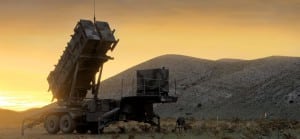
The Army in its fiscal 2017 budget request plans to spend $35 million to begin a search for upgraded Patriot missile defense radars that Raytheon [RTN] has already developed with more than $150 million of its own money.A program buried in the Army’s research, development, test and evaluation funding requests for fiscal 2017 called the lower tier air and missile defense (LTAMD) capability seeks to integrate a gallium nitride array antenna onto a baseline Patriot battery.Meanwhile, Raytheon has completed assembly…

 By
By 











